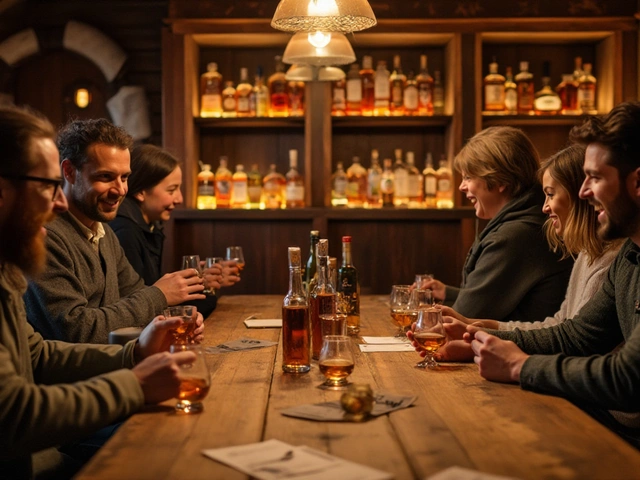Beginner Wine Guide: Simple Steps to Start Your Wine Journey
Feeling lost in the wine aisle? You’re not alone. The world of reds, whites, and rosés can look overwhelming, but you don’t need a sommelier degree to enjoy a good glass. This guide breaks down the basics so you can pick, taste, and talk about wine without second‑guessing yourself.
Choosing Your First Bottle
Start with what you already like. If you enjoy fruit‑forward drinks, look for a Pinot Noir or a light‑bodied white like Sauvignon Blanc. If you prefer richer flavors, try a Cabernet Sauvignon or a buttery Chardonnay. Price isn’t everything—many great entry‑level wines sit in the £5‑£12 range.
Read the label, but don’t overthink it. The grape variety, region, and year give you the main clues. A New Zealand Sauvignon Blanc usually bursts with citrus, while a Chilean Cabernet offers dark fruit and a hint of spice. If a wine lists “unoaked” or “lightly oaked,” you know the flavor will be cleaner and less woody.
Don’t be shy about asking staff for help. A friendly bartender or shop assistant can point you to a reliable, affordable option. Say something like, “I’m new and love fruity drinks—what would you recommend?” Most will suggest a crowd‑pleaser that fits your taste.
Tasting Tips for Newbies
Before you sip, give the wine a quick look. Hold the glass against a white background; a clear, bright color often means the wine is young and fresh. Darker hues can signal age or a fuller body, especially in reds.
Give it a gentle swirl. This releases aromas and helps you decide if the scent matches the flavor you expect. Take a small sniff—if you smell citrus, berries, or herbs, those notes will likely show up on the palate.
Take a small sip and let it roll around your mouth. Notice the first impression (sweet, acidic, bitter) and the finish (how long the taste lingers). If the wine feels too harsh, add a splash of water or a few ice cubes to soften it. That’s a common trick for beginners.
Pair the wine with simple foods. Light cheeses, crackers, or a slice of pizza work well with most entry‑level wines. Matching flavors helps you see how the wine interacts with food, making the experience more enjoyable.
Finally, keep a short notebook. Jot down the name, what you liked, and any quirks. Over time you’ll spot patterns—maybe you always prefer dry whites or enjoy a hint of oak in reds. This personal log becomes your cheat sheet for future purchases.
Remember, wine is meant to be fun, not a test. The more you try, the better you’ll understand your own palate. So grab a bottle, invite a friend, and start tasting without fear. Cheers to the start of a tasty adventure!
Wine tasting is a delightful experience, yet it often raises the question: to swallow or not? This article explores the pros and cons of swallowing wine during a tasting. Discover the reasons some experts might skip it, and learn tips to enhance your wine-tasting adventure. Perfect for both wine novices and aficionados.
View Details

